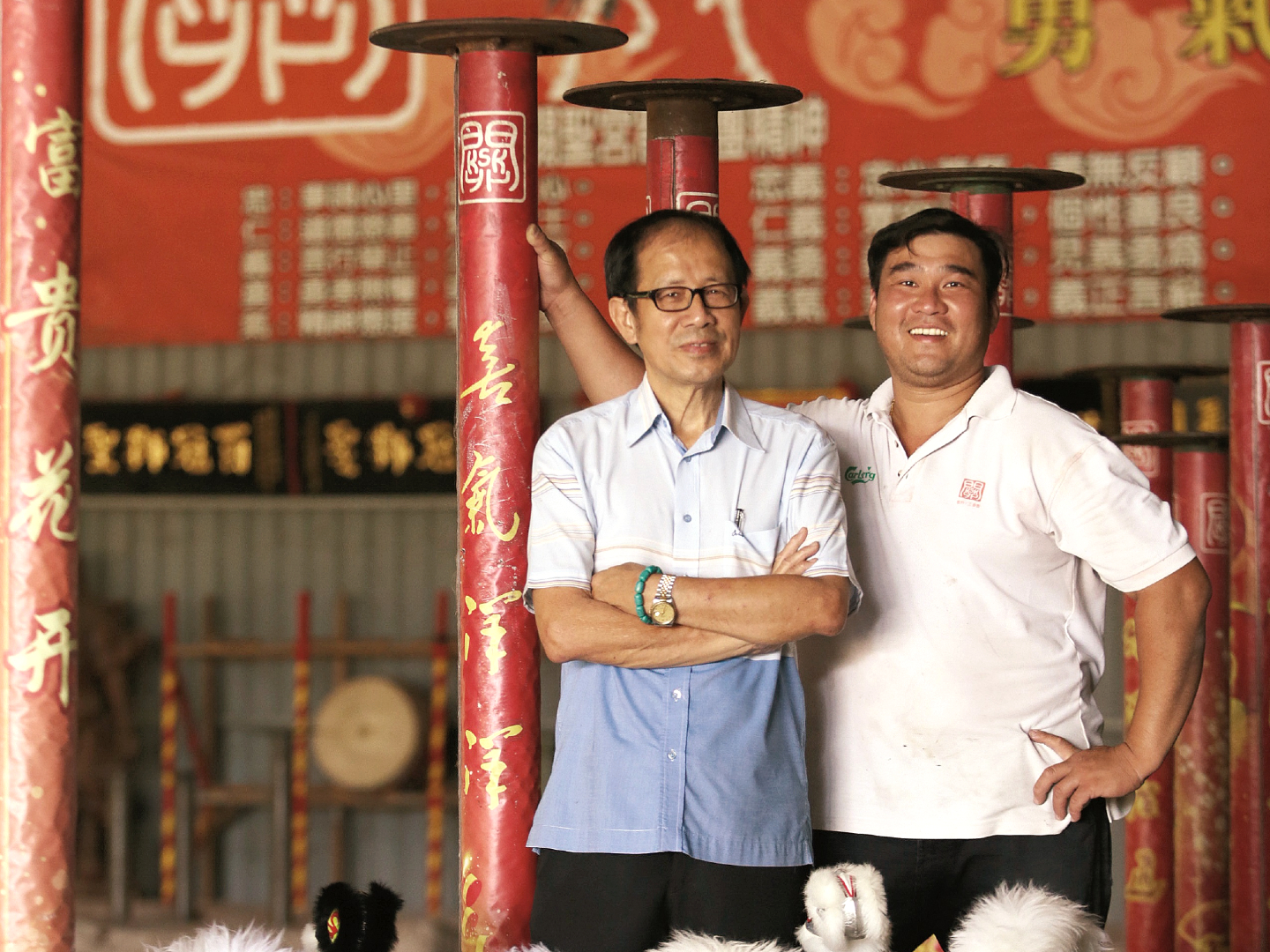
Founder Tan Chong Hing and coach and troupe leader Tang Puay Sen (Photo: Sam Fong/The Edge)
Had it not been for the Covid-19 outbreak, Tang Puay Sen would have been in the US, conducting yet another workshop. It was one of several trips abroad planned for this year that has now been scuppered, though he and a small team were in Australia and lucky enough to return home just before the Movement Control Order (MCO) was imposed.
As a young boy hiding inside a drum to avoid being dragged home by his mother, Tang could not have imagined that his interest in lion dance would one day bring him around the world. Almost three decades on, the jet setting is par for the course as coach and troupe leader of the world-famous Kun Seng Keng Lion and Dragon Dance Association.
We met at the troupe’s training base in Muar, a warehouse hidden from view behind the temple grounds that gave the renowned group its name. Situated within a small housing neighbourhood bordering an oil palm field, it is both a reminder of the group’s humble beginnings and remarkable achievements.
Usually, the rhythm of the drums would reverberate persistently, with practice ramped up from three times a week to every day, and then thrice daily when it is closer to competition time.
But now, the air feels strangely still in the quiet. The team bus has been parked in its spot for the last few months while a thick layer of dust has settled on the tarpaulins covering the team’s equipment.
80323662_2703526509727373_788599499269341184_n.jpg
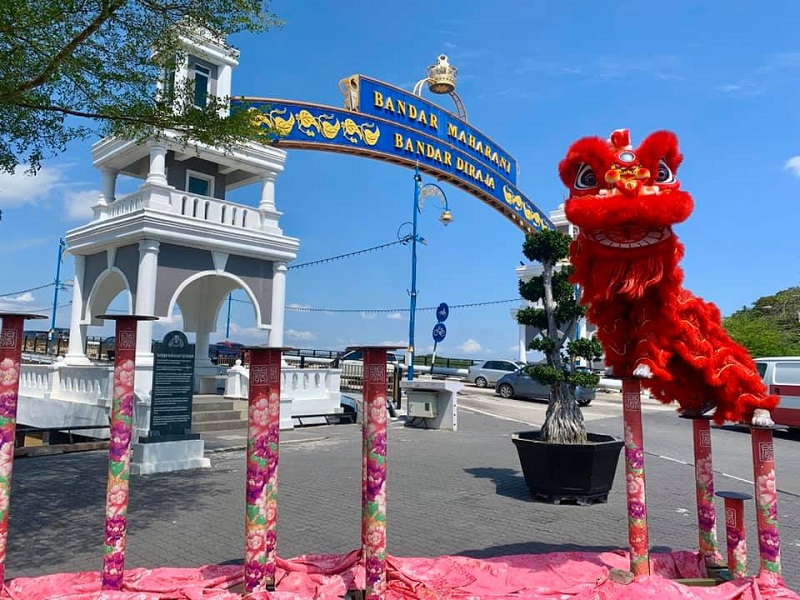
“It is the longest we have probably rested. They haven’t been training for four months,” says Tang, 43.
“It is too long. For lion dance practitioners, even if they don’t move for two weeks, the muscles start to stiffen up,” interjects Tan Chong Hing, 66. The genial-looking, bespectacled founder of Kun Seng Keng is an unlikely figure in a world traditionally associated with martial artists.
Tan has loved lion dance since he was young. Yet, having grown up in a small, rural village, he never took a lesson. He recalls with a smile, “At the time, only those in Muar town had the opportunity to learn lion dance. To this day, I can’t even play the drums. In the beginning, I tried to help when we didn’t have enough players, but everyone laughed at me because I was that bad.”
Still, it was his bold confidence and far-sightedness that helped steer the small town lion dance troupe founded in 1988 onto the world stage. Together with chief coach Siow Ho Phiew — arguably the grandmaster and “spiritual father” of Malaysian lion dance — they carved out many firsts along the way, earning Kun Seng Keng the reputation of being the “king of lions”.
Theirs is a legendary tale, an inspiring story of success that has been immortalised on the silver screen no less — in the 2014 movie, The Great Lion: Kun Seng Keng. But like the film, what is often glossed over are the hardships of getting there. Tan recounts, “So many people told me it wouldn’t work. One even told me that we would shut down within three months.”
He details their multiple triumphs against the odds over the years with quiet pride, of proving sceptics and naysayers wrong, and making a name for Malaysian lion dance. Coach Tang chimes in matter-of-factly, “I’ll be honest to say that had it not been for Kun Seng Keng, lion dance would not have become what it is today.”
“But not all troupes would acknowledge our role in it,” Tan grins, revealing a glimpse of the competitive spirit beneath his calm demeanour. Their self-assurance is backed by results, being the most awarded troupe in the world with about 58 world titles and 68 national ones at last count. Tang himself delivered 11 world and 17 national championships during his competitive years. To think that the leaders were once “advised” to stop competing after only three national wins.
Tan is fond of the Chinese idiom, “The winner is king, the loser an outlaw”. But as the conversation carries on, one begins to understand that for the founder, winning is not the be all and end all but rather, it is imbued in the spirit of lion dance itself — to bravely challenge the limits.
Steeped in the tradition and philosophy of martial arts, the performance of lion dance expresses exploration and strength as the lion climbs to new heights, investigates and then advances into new territories. Kun Seng Keng has put these principles into practice physically as well as symbolically. Its winning record may go down in the history books, but the troupe’s greatest legacy lies in its contribution to the evolution of lion dance as a cultural art form.
“Lion dance was traditionally a common folk, ‘street’ style performance art. Back in the day, you wouldn’t see five-star hotels having lion dance shows,” says Tan. He and Siow believed that in order to grow or sustain the art form, they needed to take it from the “kampung” and streets to bigger arenas. Their timing was ripe.
During an interesting period in our history, lion dance performances were not permitted in Malaysia — except during Chinese New Year — for about two decades after the May 13 racial violence of 1969 as it was not deemed part of the Malaysian cultural identity and excluded from the national culture policy. As a result, interest among the Malaysian Chinese community was also not particularly strong.
kun_seng_keng_lion_and_dragon_dance_association.jpg
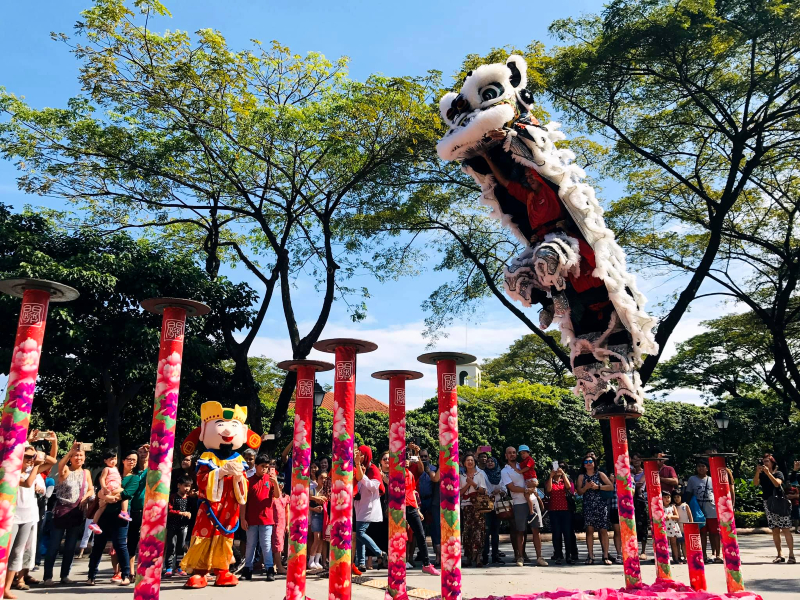
A turning point came in 1974, when the then prime minister Tun Abdul Razak visited Mao Zedong in Beijing and was treated to a lion dance performance as part of the welcome ceremony. This led some prominent Malaysian Chinese politicians to start voicing their support for lion dance to be recognised as part of our national culture, backing the Malaysia Selangor & FT Dragon and Lion Dance Federation, the oldest in the country.
Still, there was resistance. Most famously, in 1979, the then home affairs minister Tan Sri Ghazali Shafie declared it a foreign dance and suggested that groups should instead consider changing it to a tiger dance, to be paired with local instruments such as tablas, gamelan and flutes.
It was only in 1990 that the so-called ban was lifted, coinciding with a policy shift towards multiculturalism. Amid this wider backdrop, lion dance in Malaysia was on the cusp of a revolution. The thrilling high pole style of lion dance commonly seen today is something to call our own.
It is a relatively new development, which has since brought a strong sporting and acrobatic element to the dance. While the idea of performing on poles originated among other groups, Kun Seng Keng is credited for the standardised high pole design currently used in competition and public performances.
The troupe also brought it to the world’s attention. The year was 1992 and it was invited to Hong Kong for a prestigious invitation-only competition. “At the time, troupes used to carry tables and chairs, all sorts of things, to competitions. In Malaysia, we already had wooden poles by then, but they were not very stable. We brought our prototype metal poles, which we could dismantle and pack into the cargo, and went to Hong Kong,” says Tan.
ksk_competition.jpg
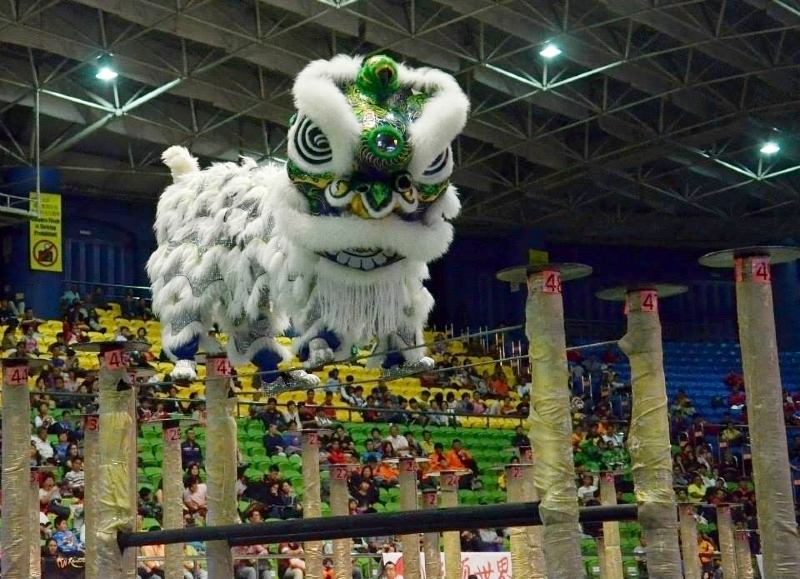
They were not well received initially — not only for its strange-looking poles but also the team’s young performers. “Our lion head performer was only 13 at the time. The troupes from China and Hong Kong were 50 to 60 years old on average. One man came over to ask our boys, ‘Are you sure you can jump this far up there?” he recalls. The team won and by the end of the competition, people were approaching them to buy the high poles and lion heads designed and made by Master Siow.
Behind the scenes, Siow had met up with like-minded heads of associations while in Hong Kong to propose the setting up of a professional body, leading to the birth of the International Dragon & Lion Dance Federation. In 1993, a standard “Asian Pole Size” was established, a ruling that set competition poles at not lower than one metre and not taller than three metres for competitions, to ensure the safety of the practitioners. A 10-point scoring system was also introduced.
Tang, one of the first to get up on the jongs, as the high poles are called in Cantonese, remembers being a guinea pig in creating many of the now common acrobatic stunts. “We started by jumping at a low height from one, the distance of one flower pot to another, which was what we used to perform on. Sometimes, the moves were created by mistake but they looked good, so we decided to keep them. There was a lot of trial and error.”
Among his most impressive achievements was being able to leap across the high poles and land on the very last one, with both the head and tail of the lion perched on a single pole. “We were told it would be impossible. And it was, but we did it,” Tang laughs. “The following year, everyone was doing it,” he adds, pointing out that Kun Seng Keng was responsible for many of the standard high pole movements seen today.
Tan reflects on the early years, “A lot of people hated us and scolded us for bastardising tradition. But ‘preserving tradition and culture’ is often misunderstood. It is not about keeping the status quo.” Now retired as troupe leader and having taken on an advisory role, he explains, “Competition is the very element that has allowed the cultural art form to develop. It is integral to the spirit of lion dance itself.”
20200805_peo_muar_kuan_sheng_keng_24_sam_1.jpg
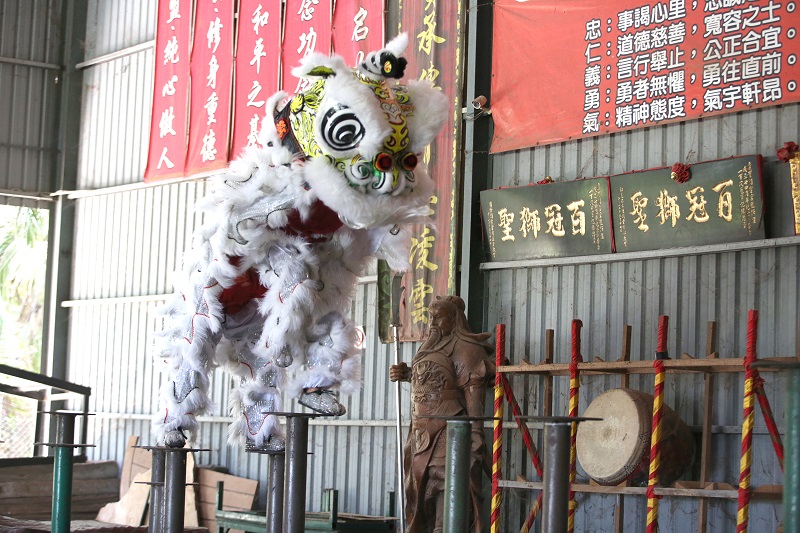
Yet Tan has always set his sights further ahead. When establishing the troupe, one crucial element that he and Siow decided on was to remove any religious rituals or practices from Kun Seng Keng’s training. Historically, martial artists revered the “lion” for its sense of power, attributing a mythical spirit to the lion head.
“Even now, many troupes still put the Buddhist fu or paper charm on the lion and hold a ceremony to awaken the lion by dotting its eyes,” Tan explains. “Our motto is to teach lion dance as a cultural activity. And if there are any rituals, it is traditional and not religious. Otherwise, in 100 years, lion dance will still only be practised by the Chinese and even then, the only ones will be the Buddhists.”
Syahdatul Azmi Bustaman, 27, is one of the current core performers of Kun Seng Keng. He is joined by Ang Aik Meng, 25, another veteran member. Both have been training since their school days, having been drawn to the high-octane stunts.
“Initially, my friends did think it was weird that I joined a lion dance troupe. But they got used to it. While most people watch it, I get to perform. It is rewarding for me. Plus, I get to mix with the other races and the discipline of the training is something that I really like as I get to spend my time wisely,” says Syahdatul.
Both acknowledge that learning lion dance is physically and mentally demanding. “When you get on the poles for the first time, it is really scary,” says Ang. “But once you get used to falling, it becomes easier,” injects Syahdatul, who started as a drummer before learning the skills of the lion tail performer. His most memorable experience was taking third place at the annual Genting Lion Dance Championship.
Kun Seng Keng members are expected to maintain a good personal image, with no dyeing of hair or ear piercings for the males. They are also not allowed to smoke. It is all part of the professional and systemic approach that the leaders of the troupe believe is necessary to carry the cultural art form forward.
20200805_peo_muar_kuan_sheng_keng_14_sam_1.jpg
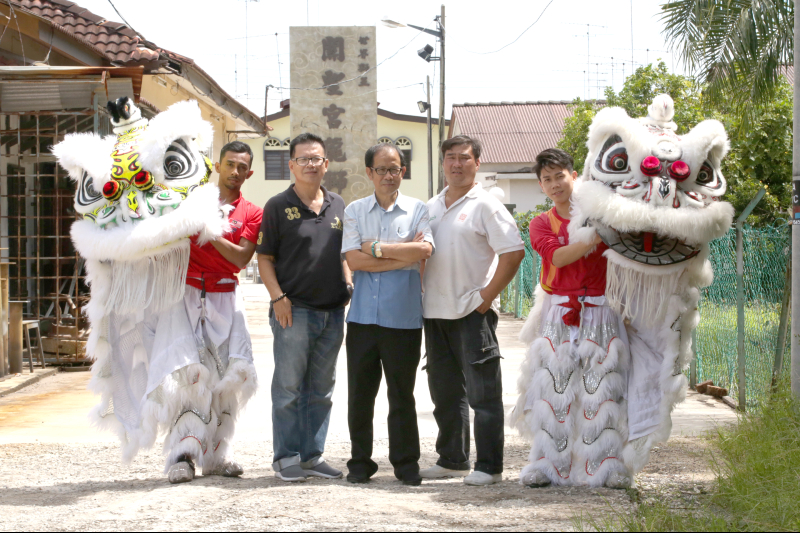
Counting Malaysia luckier than other countries with a large Chinese community, Tan nevertheless says that like other traditional art forms, sustainability is an issue. “Urbanisation and modernisation have an impact. Plus, parents today are less willing to let their children train for hours. There is always tuition and other lessons, among other things. In Japan, there are hardly any more groups practising lion dance. Even in China, in Guangzhou itself, where our brand of lion dance comes from, most of the practitioners are from other cities,” he points out.
Then there is the issue of financial support. “Since we are a minority culture here, our lion dance has relied on the support of local businesses and corporations, and still does, even after our high pole lion dance was recognised as a national heritage in 2007. Conversely, in Chinese-majority countries like China or Taiwan, only the government supports such troupes. Businesses do not see the value in it, or they want to see calculable commercial returns. In that sense, we are better off, as the local Chinese community still supports us.”
Coach Tang says, “This is not a money-making endeavour but a money-burning one. None of us are full-time members or on the payroll. I have a tiling business and I hire as many of the members as I can — because how many employers would allow you to take time out to rehearse up to three times a day and then take time off to compete here and there? We also have to pay them a stipend or meal allowance while they are training full days.”
Then there are the travel costs. “The furthest we’ve gone for a competition is Hawaii, even with a small team of eight, how much would that cost? Money management is so important. If you make money during the Chinese New Year season, you had better save most of it.”
Tan then sums up the dilemma of the situation. “And if you don’t compete and do well, no one will hire you for performances.” A statement he made earlier now rings profound. “Passion alone is not enough. You need to have tenacity and dedication.”
lion_dance_ksk.jpg
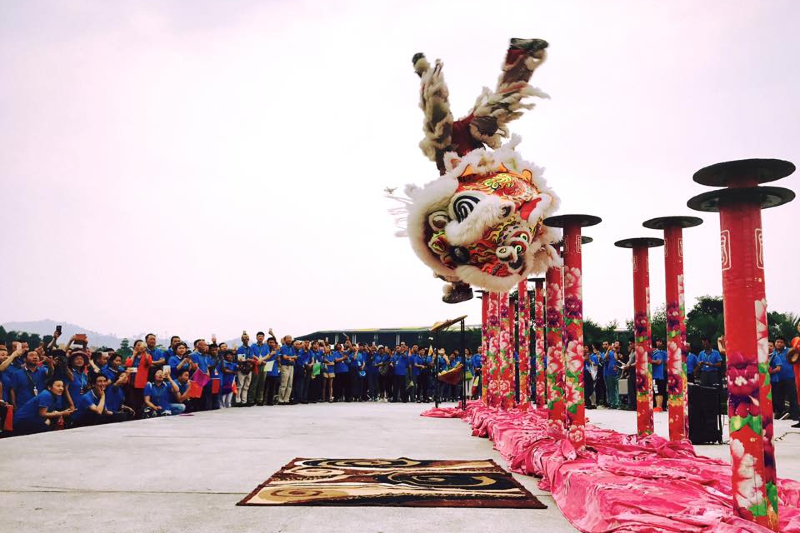
It was directed at the emerging rise of younger troupes which, while a positive thing, remains an uphill challenge in the long run. But Tan and Siow have laid the groundwork for those who will come after them as Kun Seng Keng leads the way with a model of what could be.
In addition to creating its own training syllabus that allows it to teach a large group of students at once, the International Kun Seng Keng Lion & Dragon Dance Alliance was launched in 2010, which now boasts 80 member associations in 19 countries. Through their annual meeting, the alliance shares new approaches or ideas while consolidating a common vision and goal for the betterment of lion dance. On top of that, Tang and the other coaches often conduct training at the invitation of alliance members. There are also internal competitions among associations.
Tan pauses, pointing to the banner boldly displaying the five values of Kun Seng Keng. “The world has advanced. As an organisation, we must also advance. It will always be difficult to maintain traditional arts, but I hope these values will drive us to keep going.”
The troupe is now awaiting the results of their bid to get the High Pole Lion Dance listed as an intangible cultural heritage by Unesco. “In the past, people often associated lion dance with gangsters and riffraff, but it is no longer so. We have to elevate it. This is especially so that Malaysia, its place of origin, will be recognised. It is for all of us,” says Tan.
Perhaps the best proof that Malaysian lion dance has set the bar high is the competition level of local troupes these days. Tan and Tang are not particularly worried about stiff competition or the younger ones catching up.
“Of course, we still hope to win. But our focus now is on bringing lion dance to more people,” says Tan. Ultimately, he stands by his belief, ‘The winners are king…’. “To this day, people say we do not respect the roots of tradition. But they have either followed us all this way, or they have been left behind. So this is how it always is. We need to keep innovating, keep exploring. That is the spirit of the lion.”
This article first appeared on Aug 24, 2020 in The Edge Malaysia.


